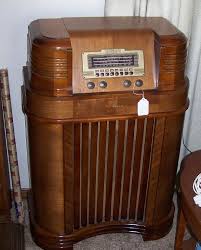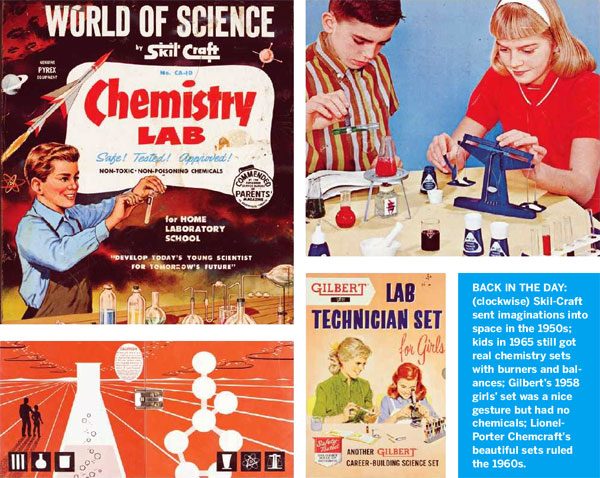Monday, December 29, 2008
Sliding into home
No matter how short or long a time we're away, the return is always worth it. Driving into town from just about any direction always starts that resonating feeling that we're HOME.
The year is just about as short as one can get. We'll be finalizing the moments left until it winks out of human cognizance in any way but a memory with friends who live out in the hills.
All I can say to you who read this is:
Have a good today and a great tomorrow.
Thursday, December 25, 2008
The ups and downs of elevators

Our 3-stop elevator at the church broke last Sunday night. As the resident electrical engineer, everyone came to me to solve the problem. We had a fellow in a 370-pound electrical wheelchair on the third space, who was trying to get back to the ground level to go home after the choir cantata. Ours is roughly equivalent to the model 300 here. Ours is an "Elevette" made by that same company and installed in 1983.
An hour or so later, I'd tried everything I could think of, checking limit switches, breakers, door closings, etc. We finally loaned the fellow a regular chair and helped him down the two flights of steps to exit the church.
We found out lots of things that aren't "up to snuff" about the elevator instructions, location of key, phone number for the repairman. It was definitely a learning experience. Standing out there Monday with the repairman in upper-30's temperatures was also a learning experience! He did find out that it was a special part that won't be able to be shipped to our location until after Christmas, so no joy for those who would attend the Christmas Eve service with definite needs to get up into our multi-story building with this device's assistance. Of all things that could delay the return to operation, it was a burned out coil on the main power contactor that directs the lift motor to send the car UP or DOWN. You just don't find those under the nearest rock.
Stuck pixel? Dead pixel? What's a pixel?
No, they aren't cute little blinking lights from Peter Pan.
This article describes how you might be able to fix one in a display on your computer. The final fix might (just might) work on a display on some other kind of device that is exhibiting this maddening form of visual torture.
Good luck, and comment if you get success or want to vent at failure.
Wednesday, December 17, 2008
"Open the door...Robot"

To oh-pun on an old song title ("Open the Door, Richard"), I offer this short tale to give you smiles on a cold almost-winter day. It might make your foam mustache quiver from your melted marshmallow in your cuppa hot chocolate!
Ref: music here and lyrics here.
Winter's Roads
- Winter's Roads
- by Ron Carnell
The Winter of 1998 was the first time in over two decades that I found myself immobilized by heavy snow of Michigan. For three very long days. One result of that enforced isolation was a poem called Winter's Threads.Having read this introduction, if you want to read his poem, it is here.
Not being one to repeat past mistakes (I much prefer the excitement of making new ones), I packed my motor home the day after Christmas, 1999, with the intention of spending winter in California. I made it only as far as Louisiana, where I stopped to visit family (and instead became involved with family). Nonetheless, I stayed warm, renewed some familial bonds, and learned I'm really not very well suited to the travelling life.
Eight weeks later, with warm weather breaking in Michigan, I again headed North. While on the road, with little else to occupy my mind, I penned this sequel to Winter's Threads. And like its precursor, the poem is less about Winter and more about the choices we make in life.
Hot knives!
A MAKE blog post shows how to convert an old soldering iron to cut plastic with X-ACTO blades.
Be calm, my beating heart! Oh. Well, then, that settles something I've needed for some time for projects out in the workshop.
106 Years of Popular Mechanics
Popular Mechanics and Google have teamed together to bring the entire history of this magazine to viewers on the Web. You can read about that here. I spent many hours when visiting relatives in west Texas, poring through the pages of old and new copies of magazines of one sort or another. But, suffice it to say, there were few that evinced my interest and attention like PM. I loved the science articles. The level of the science in the magazine matched my own and I thought I was in heaven. Strange that as an adult I never subscribed to this one. I have read many different magazines. I still will gravitate toward this one in a library filled with periodicals in a shelving system.
Enjoy.
Friday, December 12, 2008
The Anti-Ky-WHAT?

For those who've been keeping up with all the controversy and discussion of what the 2,000+ year old Greek device (Antikythera) found, crusty, rusty, and decrepit in the body of a sunken ship must have been originally used for, here is a video of a model a museum curator (Michael Wright) has constructed that includes all the known functions that have been identified for this old device. It is thought in some circles to be the first analog computer, though it is unlikely that this device was not based on earlier devices that used some of its principles. He constructed it in his workshop, which MUST be rather better filled with construction devices than mine is. You can see more about it here.
Wednesday, December 10, 2008
Mirror, mirror, on the...sky?

We're only about 5 years away from launch, so work is in full swing on creation of NASA's next "big eye" in the sky, the James Webb Space Telescope, set to gather infrared light from oh, so far away, keeping it all straight and pure until it is digitized and stored away for scientists to talk about for years to come. Each image will be carefully examined and compared to existing knowledge.
Meanwhile, the mirror will travel hither, thither and yon about the country, getting each of its segments made, polished, checked, and finally plated with gold and checked again. The story of all this preparation is worth a read. The final device will be precious beyond compare.
Monday, December 8, 2008
Texas outlawed the Erlenmeyer flask! #2

This is a follow-up to my previous post on shorting our kids by taking any chance for real experimentation away from them by removing all chemistry sets worth the name from sales counters, etc.
A reader sent this, which I thought worthy of a follow-up post here:
This fellow is now a full-fledged technology person, earning his money by real hands-on electronics design, prototyping, and programming. He credits his arrival at the shores of the more-than-burger-flipper at least in part due to his exposure to science, scientific thinking, and experimentation. Nuff said.I just read the Wired article youlinked from your blog entry about chemistry sets. Ihad no idea (but I shoulda guessed) that hands-onscience has practically been removed from education.That is discouraging to hear. When Iwent to school we did some sort of hands-on labs inscience classes from 5th grade onward. We used real(gasp) glassware, from about 9th grade on each pairof students used their own (shudder) Bunsen burner,we learned how to do things like (oh how subversive!)fractional distillation, and even worked with (OMG!OMG!) some radioactive materials.To protect the guilty, I'll not comment about thechemistry and electronics that went on at my houseoutside of school hours. The cops never did figureout who caused the BOOM that upset so many concernedcitizens and did substantial damage to the concretedown in the flood control channel.
Sunday, December 7, 2008
Pages of radio history
The catalog lists ham radio equipment, as well as laboratory test equipment. The components and how they are named and specified in the text tells much about that era's equipment. You learn the popular component voltage ratings, resistor wattages, radio chassis sizes, and the tools it took to work with the components and build your own equipment.
Viewing this catalog is more than just turning pages without the dust and musty smell: these are the pages of radio history.
Saturday, December 6, 2008
Shortwave link to G_d?

My wife is a United Methodist pastor. Today we went out in the country to have lunch with some folks who have visited our church many times (and who speak fluent Spanish). In the midst of our lunch, I happened to see an old, console radio of the type that was in many living rooms in the 1930's. I asked if it worked and the lady of the house said it did and we could try it out after lunch.
Being an engineer, I had a short mental lapse from the after-lunch conversation about what this and that in the Bible REALLY means. I thought of the radio. I got up and the lady of the house turned it on by plugging it in. After some warm-up time for the tubes, I tuned around and found a couple of AM radio stations. There were only 4 control knobs, so the band switch was easy to locate. I switched to shortwave. No joy, even after tuning all across the band (3-18 MHz, as most of that era radio sets did). I asked her for an extension cord. She found one of about 12 feet length. I hooked it onto the wire I found dangling in the back of the set. The first shortwave station I tuned to was about 15 MHz and was in fluent Spanish. It was a religious broadcast. The folks we were visiting were amazed, since with the 3-foot antenna inside the case, they had not received anything. They may now have another source for receiving broadcasts that had been sitting inside their home for years.
Friday, December 5, 2008
The Kosmophone Project

Every once in a while, you hear of a project that seems to be a use of technology that is, well, appropriate. In my opinion, music is sublime, as is poetry, photography, and some social interaction. What could be better than hooking really exceptional technology up to produce music? Well, there could be some things, but this is the subject of this post.
A ham buddy in Austin sent me links to the Kosmophone Project and some of the music produced from that effort. The images and text concerning the effort are really a nice preface to listening to the music itself.
Thursday, December 4, 2008
Texas outlawed the Erlenmeyer flask!

I was reading a blog today, when I got a serious shock to the system. I read:
(emphasis is mine)Kits Today: Wimpified
Compared to their robust ancestors, chemistry sets today are wimpy. They revolve around low-energy reactions and the quiet creation of crystals and polymers. The average set from the mall has no burner to provide a flame, no chemicals that go bang. It’ll let you prepare solutions that change colors or glow like a light stick, but that’s about it for excitement.
Why? It’s common sense to delete highly toxic compounds, and we’re certainly more focused these days on insulating kids from risk.
But mostly it’s fear: of liability, of terrorists, of the neighbors. Overreacting to methamphetamine trafficking, Texas has outlawed the Ehrlenmeyer flask. In August, panicky Massachusetts police ransacked the basement lab of retired chemist Victor Deeb, who was simply fiddling with experiments in his home.
The post concerned making your own chemistry set in this modern age, where the chemistry sets of yore do not appear in stores before Christmas like they did back in the 50's. I got my large, Gilbert set for my November birthday in 1958, just in time for a parental divorce and in time to become familiar with it before entering the halls of high school chemistry lab. After a sulfur smell came from it, my mother banned me to a tiny outbuilding reminiscent of an outhouse in shape, but a trifle larger. I built in a shelf for a lab table, put a lock on it to protect my set, and poured a bag of ready-mix concrete in front of the door to solidify to keep it from getting mired in mud. It was all the way on the back of the property, so it was far away from danger to the house. Since there was no electricity, all the experiments had to be done during light hours. That was probably a good thing.
I replicated almost all the high school lab experiments at home, where I had more time to appreciate them and think about how they worked. But I did not have access to sodium, nor did I want that. I was in rapture over the "spinthariscope" that showed me some evidence of "atomic energy". Woo-hoo! What adventure.
Well, back to the shock of Texas law and the (almost) death of the chemistry set. The Texas Department of Public Safety (state troopers/state police) entered into a memorandum of understanding with higher education folks in the state to prevent glassware of chemistry nature from coming into the hands of the public, some of whom might use it for nefarious and illegal purposes.
Who knew that we would come to the situation of failing our kids by incapacity to provide them with chemistry sets to stimulate their science leanings because of laws to "prevent" folks from creating illegal drugs. Whew. I'll have to think about that for a while.
Tuesday, December 2, 2008
WiFi heaven
Here is a solution for needing to reach a little farther inside your house or to your patio.
Here is one solution for intermediate distance with a path to either locations in a line or one distant location.
Here is another solution, using the can antenna from the above solution as the launching pad to reach up to 10 miles if one of these antennas is used on each end.
Another, commercial solution is any of these antennas from a commercial company MFJ Enterprises, Inc. They also sell the connection cables to your WiFi box.
I hope this helps your efforts. You must have an external antenna with an antenna connection jack for the last three and the first one requires just an external antenna upon which to hang the directional reflector.


